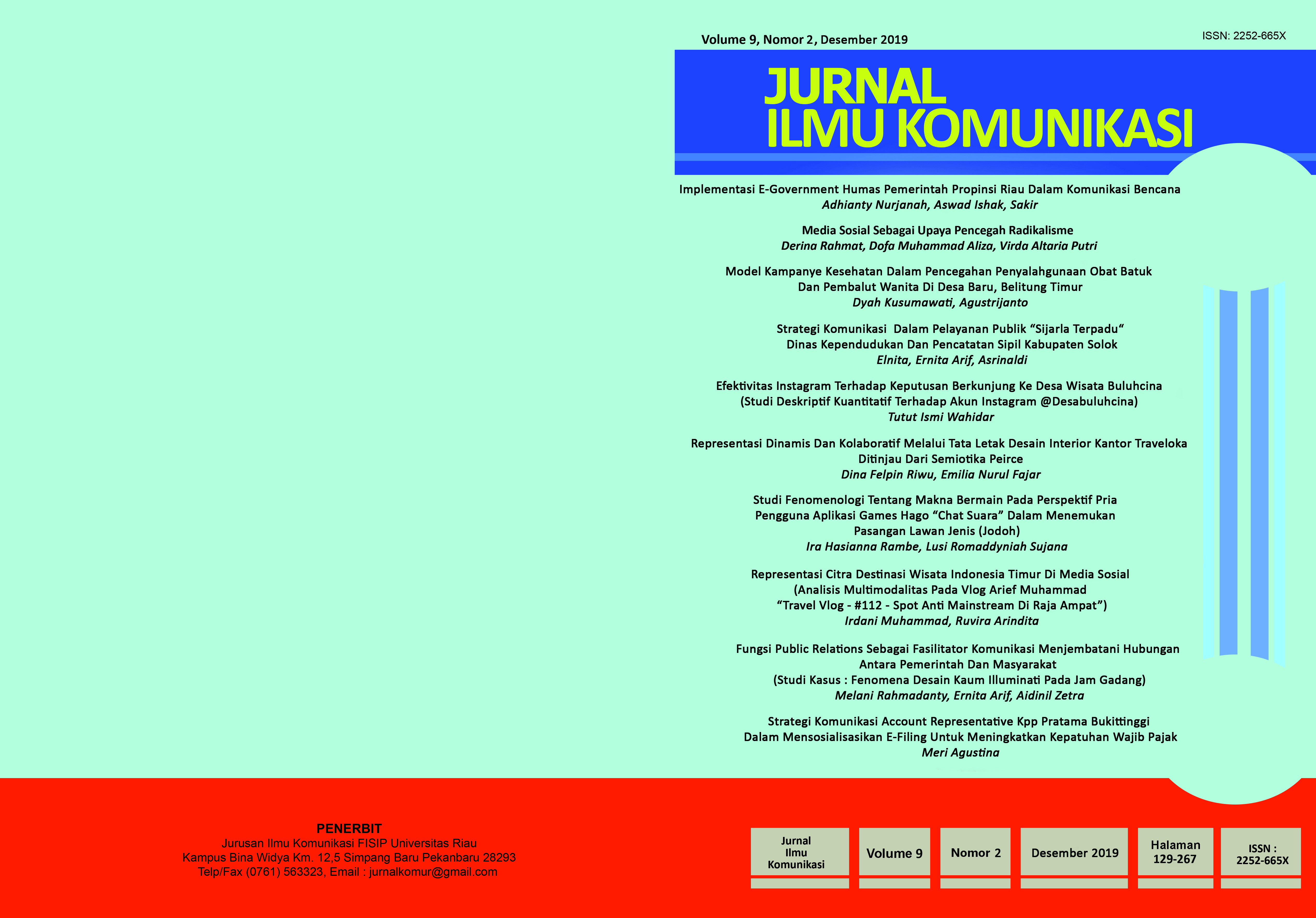REPRESENTASI DINAMIS DAN KOLABORATIF MELALUI TATA LETAK DESAIN INTERIOR KANTOR TRAVELOKA DITINJAU DARI SEMIOTIKA PEIRCE
DOI:
https://doi.org/10.35967/jkms.v8i1.7363Keywords:
Semiotics Peirce, Office Interior, Corporate IdentityAbstract
This study applies the theory of semiotics by Charles Sanders Peirce with the aim of knowing the signs that exist in the design of space in the office as well as for interior designer and architect practitioners to dissect and determine approaches that will serve as references in conceptualizing and designing office interior layouts. This study used a qualitative method. This qualitative study used the theory of semiotics by Charles Sanders Peirce by finding the signs seen in the interior design of the Traveloka office. Other sources of information such as literature and photos of Traveloka's office interior will be combined together using the data observation process. The findings of this study were to look at signs of dynamic and collaborative representation in the layout of the interior design of the Traveloka office located in every area and space, which uses a material with industrial concepts in interior elements. By finding the signs that existed in the interior design of the Traveloka office, it is expected that space users are sensitive to the concept of companies that want to portray the company's image through the design of office layouts.
References
Abdulkadir, M. (2010). Hukum Perusahaan Indonesia.
Alfari, Shabrina. (2016). Kenali Jenis dan Fungsi Batu Bata. https://www.arsitag.com/article/kenali-jenis-dan-fungsi-batu-bata. Diakses 03 Maret 2019
Arom. (2017). Dekorasi Ruang Dengan Tanaman, Hadirkan Suasana
Ruang yang Indah dan Menyegarkan. https://interiordesign.id/dekorasi
-ruang-dengan tanaman/. Diakses 03 Maret 2019
Astro. (1995). Karpet Lantai. https://cvastro.com/karpet
lantai.htm. Diakses 03 Maret 2019
Broadbent, Geoffrey. (1980). Signs, Symbols, and Architecture. New
York, John Willey & Sons. Ching, Francis D.K. (2002). Architecture,
Space and Order. New York: Macmillan Publishing Company.
Christomy, T. (2010). Peircean dan Kajian Budaya. Dalam Semiotika Budaya, penyunting Dekoruma, Kania. (2016). Furniture 101 : Metal, Si Kuat dan Awet. https://www.dekoruma.com/artikel/10441/furniture-101-metal
si-kuat-dan-awet. Diakses 03 Maret 2019
Hardjana, A. (2008). Komunikasi dalam Manajemen Reputasi Korporasi. Jurnal Ilmu Komunikasi UAJY, 5(1).
Hidayati, Nita. (2017). Warna Abu-Abu : Pilihan Warna Interior yang Elegan dan Jauh dari Kesan Suram. https://interiordesign.id/desain
interior-warna-abu-abu/. Diakses 03 Maret 2109
Irma. (2017). Perbedaan Lampu Warna Kuning dan Lampu Warna Putih. https://kabaroto.com/post/read/perbedaan-lampu-warna-kuningdan-lampuwarna-putih. Diakses 03 Maret 2019
J. Lindberg, Jordan. (2001). Analytical Philosophy, Beginnings to the
Present, United States of America,Part 1 Jackson, P. C. (1987). Corporate communication for managers. Trans-Atlantic Publications.
Larasati, Awita. (2108). Arti dan Pengertian Warna Dalam Desain.
https://idseducation.com/articles/80270/. Diakses 03 Maret 2019
Laurens, Joyce Marcella. (2004) .Arsitektur dan Perilaku Manusia (Jakarta: PT. Gramedia Widiasarana Indonesia).
Lebond, Bayu. (2017). Arti dan Pengaru Warna Bagi Psikologi Manusia. Warna Dapat Mempengaruhi Mood. https://psyline.id/arti-danpengaruh-warna-bagi-psikologimanusia/. Diakses 03 Maret 2019
Noth, Winfried. (1990). Handbook of semiotics. Bloomington. University press. Tietz, J., Hoffman, W., & Meuser, P. (1999). The story of architecture of the 20th century. Konemann.
Tommy Cristomy dan Untung Akuntansi Indonesia. Jurnal Akuntansi
Multiparadigma, 6(3), 350-361.
Yulianto, S. (1997). Arsitektur Modern Akhir Abad XIX dan Abad XX.
Zoest, Aart van. (1978). Semiotika, Pemakaiannya, Isinya, dan Apa yang Dikerjakan dengannya (terjemahan). Bandung, Unpad.
Downloads
Published
Issue
Section
License
The copyright of the article once accepted for publication shall be assigned to the journal as the publisher of the journal. The intended copyright includes the right to publish the article in various forms (including reprints). The journal maintains the publishing rights to the published articles.
Authors are permitted to disseminate published articles by sharing the link/DOI of the article at the journal. Authors are allowed to use their articles for any legal purposes deemed necessary without written permission from the journal with an acknowledgment of initial publication to this journal.
Jurnal Ilmu Komunikasi (JKMS) is licensed under a Creative Commons Attribution-NonCommercial-ShareAlike 4.0 International License.


